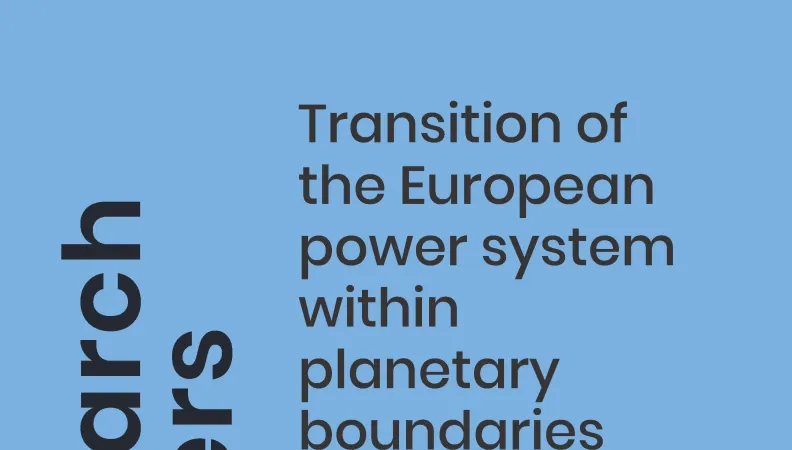Share the page
Transition of the European power system within planetary boundaries
Published on

Planetary boundaries define a formal framework for a more "integrated" analysis of human activities' impacts on various environmental categories. Their application to energy systems allows assessing the sustainability of different mixes and transition trajectories beyond direct CO2 emissions.
In this study, we propose to evaluate the environmental impacts of a carbon neutrality trajectory, expressed in direct CO2 emissions, of the European electricity system on life cycle greenhouse gas emissions, water consumption, land use, and eutrophication. The impact on the consumption of various materials is also assessed. From this neutrality scenario, several transition trajectories, including an explicit constraint on the various impact categories, are then proposed to assess the effect of a broader understanding of sustainability on technology choices. The methodology proposed should be taken as a proof-of-concept of an environmental impact assessment of the European power system with the planetary boundary framework. The method is based on the extension of an intertemporal optimization model of the European electricity system, eTIMES-EU, to highlight possible transfers or convergences between impact categories. The results show that a rapid phase-out of fossil fuels allows a reduction of greenhouse gas emissions as well as other pollutions. However, respecting the planetary boundaries at the European scale requires limiting the demand for electricity and improving industrial processes to reduce the environmental impacts of technologies.
Useful Information
-
Authors
-
Victor GUILLOT, Edi ASSOUMOU
-
Coordinators
-
Annabelle Moreau Santos, Antoine Godin
-
Edition
-
275
-
Page number
-
21
-
ISSN
-
2492 - 2846
-
Collection
-
Research Papers
